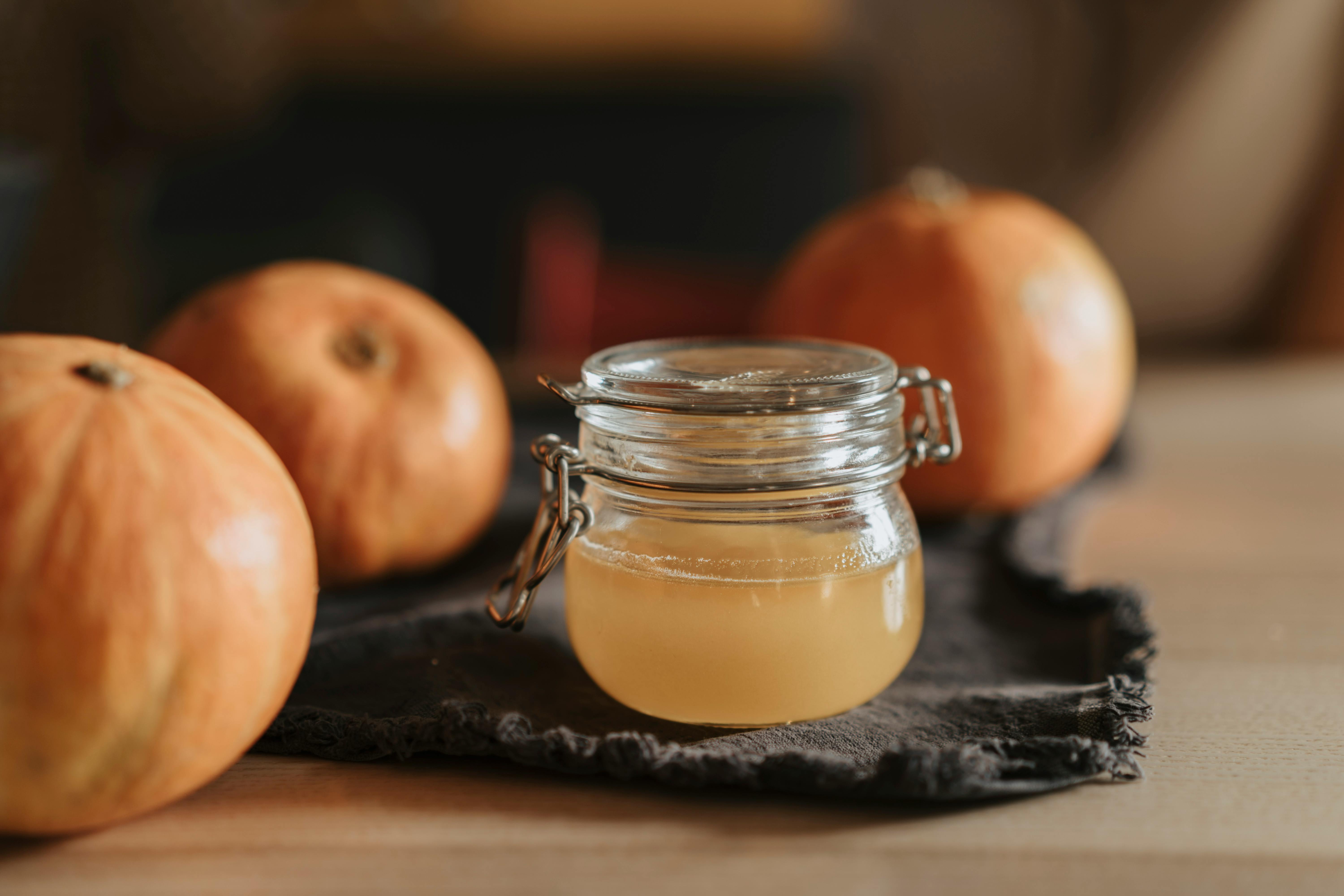Vinegar is a versatile household item that can be used for cleaning, cooking, and other purposes. While many people use vinegar for cleaning, there is some confusion about the differences between cleaning vinegar and distilled vinegar. This article will explore the differences between these two types of vinegar and explain how they should be used in different scenarios.Cleaning vinegar is a distilled white vinegar made from grain-based ethanol that has been mixed with oxygen to increase its acidity. It is typically used in cleaning and disinfecting because of its ability to kill many types of bacteria and germs. It can also be used to remove hard water stains, soap scum, and other buildup. Unlike regular white vinegar, cleaning vinegar has a higher acidity level of 6%, which makes it 20% stronger than regular white vinegar.
What Is Distilled Vinegar?
Distilled vinegar, also known as white vinegar, is a type of vinegar made from grain alcohol that has been distilled and fermented until it becomes acetic acid. It is a clear liquid that is very acidic and has a sharp, acidic taste. Distilled vinegar is often used in cooking and baking, as well as for cleaning and removing odors. It can also be used to make pickles, salad dressings, sauces, marinades, and other food dishes. Distilled vinegar has antifungal properties that make it an effective natural cleaner for surfaces such as countertops and floors.
Distilled vinegar can vary in strength from 5 to 20 percent acetic acid. It is important to take note of the percentage of acetic acid when using distilled vinegar for cleaning or cooking purposes. The higher the percentage, the stronger the vinegar will be. For most household cleaning tasks or food recipes, 5 percent acetic acid will be sufficient. Some recipes may require a higher concentration of acetic acid for desired results.
Distilled vinegar can be found at most supermarkets or grocery stores in both the baking section
Difference In Ingredients of Cleaning Vinegar and Distilled Vinegar
Cleaning vinegar and distilled vinegar are two types of vinegar that appear quite similar but differ in their ingredients. Cleaning vinegar is made from acetic acid, which is 5 to 20 percent stronger than the acetic acid found in distilled white vinegar. This makes cleaning vinegar more effective as a cleaning agent, which can be used for everything from removing stains to disinfecting surfaces. Distilled white vinegar, on the other hand, is made of only acetic acid and water. It is typically diluted to 5 or 6 percent acidity for use in cooking and other household purposes. It also has a milder taste than cleaning vinegar which makes it a better choice for use in recipes.
In terms of composition, the main difference between cleaning vinegar and distilled white vinegar is their acidity levels. Cleaning vinegar contains 20 percent acetic acid compared to the 5 or 6 percent found in distilled white vinegars. As a result, cleaning vinegars are more effective at cutting through grease and grime while also being powerful enough to kill bacteria on surfaces. Distilled white vinegars are better suited for light cleaning tasks such
Difference In Acidity Levels Between Cleaning Vinegar and Distilled Vinegar
Cleaning vinegar and distilled vinegar are two different types of vinegars, with the primary difference being the acidity level. Cleaning vinegar typically has an acidity level of six percent, while distilled vinegar has an acidity level of five percent. This difference in acidity levels makes cleaning vinegar more effective for cleaning, disinfecting, and removing dirt and grease from surfaces. However, it also makes it more harsh on skin and can cause skin irritation if used in large quantities or not rinsed off properly after use.
Distilled vinegar is milder than cleaning vinegar due to its lower acidity level, making it better suited for cooking applications such as pickling vegetables or adding flavor to dishes. Since it is less acidic, it is also less likely to damage surfaces when used for cleaning purposes. Additionally, it does not have the same harshness as cleaning vinegar when used on skin or fabrics.
Despite their differences in acidity levels, both types of vinegars are useful for a variety of household tasks like cleaning glass surfaces, removing stains from clothing and fabric items, eliminating odors
Difference in Odor Between Cleaning Vinegar and Distilled Vinegar
The difference in odor between cleaning vinegar and distilled vinegar lies in the type of vinegar used in each. Cleaning vinegar is made from a combination of acetic acid and water, while distilled vinegar is made from ethanol that has been fermented to produce acetic acid. This means that cleaning vinegar has a stronger smell than distilled vinegar, as it contains more of the acetic acid molecules that give it its distinctive odor. Additionally, the proportion of acetic acid to water also affects the smell of cleaning vinegar, with higher concentrations producing a more pungent aroma.
Distilled vinegar, on the other hand, has a milder smell because it contains less acetic acid. The process of distillation removes most of the impurities from the ethanol used to make it, resulting in a product that is much less pungent than cleaning vinegar. Additionally, many brands of distilled vinegars are flavored or scented with herbs or spices to add an additional layer of aroma.
In terms of use, both types of vinegars can be used for household cleaning purposes but

Uses of Cleaning Vinegar
Cleaning vinegar is a natural, safe and environmentally friendly alternative to harsh chemical-based cleaning products. It can be used for a variety of tasks, from deodorizing carpets to removing stuck-on food from pans. It can also be used for deep-cleaning surfaces such as countertops and floors. Here are some uses for cleaning vinegar:
– Carpet Deodorizer: To deodorize carpets, mix cleaning vinegar with baking soda and spread the mixture on the carpet. Leave it for 15 minutes, then vacuum it up. The vinegar will help remove odors while the baking soda will absorb extra moisture.
– Softener: Cleaning vinegar can be used to soften fabrics such as towels and sheets. Add 1 cup of cleaning vinegar to your laundry load or add a few drops of essential oils if you want a pleasant scent.
– Unclog Drains: To unclog drains, mix 1/2 cup of baking soda and 1/2 cup of cleaning vinegar together and pour them down the drain
Uses of Distilled Vinegar
Distilled vinegar is a versatile product with many uses around the home. It can be used for cleaning, cooking, and more. It is made from grain alcohol that has been distilled to produce an acidic liquid. Distilled vinegar has a milder flavor than white vinegar and it is often used in recipes calling for a milder flavor.
One of the most popular uses for distilled vinegar is as an all-purpose cleaner. It can be added to water and used to clean surfaces such as countertops, floors, windows, and mirrors. The acidity of the vinegar helps to break down dirt and grime and leaves surfaces sparkling clean. It can also be used to remove tough stains from fabrics and carpets.
Distilled vinegar can also be used in cooking. It can be added to sauces, marinades, dressings, and pickling solutions for an extra burst of flavor. It can also be used in place of lemon juice for recipes that call for it. The mild flavor makes it ideal for use in foods that are not meant to be overly acidic or tart.
Benefits of Using Cleaning Vinegar
Cleaning vinegar is a great natural alternative to harsh chemical cleaners. It is made from acetic acid, which is a natural by-product of the fermentation of ethanol. The acetic acid in cleaning vinegar makes it an effective germicide and deodorizer, as well as an excellent cleaner for surfaces such as countertops, sinks, and showers. Here are some of the benefits of using cleaning vinegar to clean your home:
1. Natural & Non-Toxic: Cleaning vinegar is a 100% natural product and doesn’t contain any harsh chemicals that can be damaging to your health or the environment. It’s also non-toxic, so it’s safe to use around pets and children.
2. Disinfectant & Deodorizer: The acetic acid in cleaning vinegar has powerful disinfectant properties that make it an effective germicide. It can also be used to deodorize surfaces by neutralizing odors caused by bacteria, mold, mildew, and smoke.
3. Multi-Purpose Cleaner: Cleaning vinegar can be used

Conclusion
In conclusion, there is a difference between cleaning vinegar and distilled vinegar. Cleaning vinegar is more acidic and has a higher concentration of acetic acid. This makes it more effective for cleaning, but also makes it more caustic and corrosive. Distilled vinegar has a lower concentration of acetic acid, making it less effective for cleaning, but also safer to use. Therefore, depending on the task at hand, either type of vinegar may be suitable, but it is important to understand the differences between them before proceeding.
When dealing with surfaces that are easily damaged by corrosive substances, distilled vinegar should always be used as a safe option. On the other hand, when dealing with tough dirt or stubborn stains that need extra strength to remove, cleaning vinegar will provide better results. Ultimately, both types of vinegar are useful tools in any household or commercial environment for various cleaning purposes.

